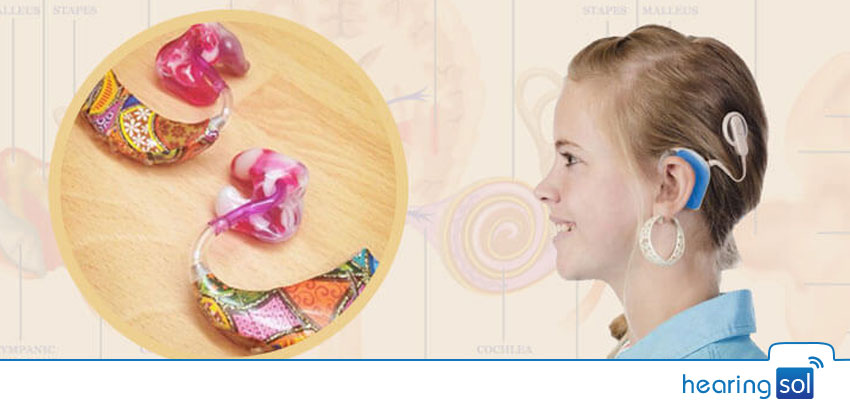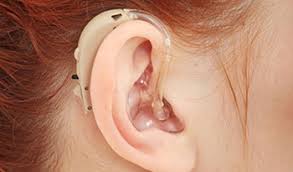
In this world of technology, hearing aid change the life of people who have a hearing problem. A human should always thank our nature. It’s very tough to prove how small insects help us to make a Future of hearing aids technology, but yes they are supporting to prove.
You can purchase the latest hearing aids at a fair price through HearingSol, If you need any assistance or you have a query regarding hearing aids or Hearing Loss, feel free to call us at +91-9327901950. We are always here to help you.
Future of Hearing Aids & Insects Connection
Have you ever spent your time in the countryside during the summer months? You have heard crickets singing, despite their small size. What’s surprising is how small the creatures are, and given the very high sound levels, they produce. They are replicating sounds made by crickets and locusts to determine if there is a way to improve amplification for hearing aids.

The studies have found that by using laser vibration structures and advanced pc modeling simulations. This may be replicated in hearing aids through modifying the stiffness of a speaker floor and is an efficient manner to make tiny speakers very loud. Some insects are even making a question mark that what a microphone can be.
In each of these processes, we may be able to learn from insects. You have seen in mosquitoes and fruit flies, they have a tiny antenna on their heads that are very sensitive to sound. According to an article on How insects are advancing hearing aid and technology, insect inspiration doesn’t stop with small speakers. Hearing aids have traditionally been designed to operate in distinct stages.
Mosquitoes, flies, and spiders all have fine hairs on their bodies that produce sound while traveling in the air and recreate the type of hearing inside a microphone. To get clear and filtering incoming sounds with a hearing aid requires quite sophisticated electronics.
It impacts the device and its battery life. Along with amplifying the sound waves, the tympanal (a tympanal organ is a hearing organ in insects) membranes also filter out a range of frequencies. There are a number of studies have been done looking at what we can learn from insects when it comes to hearing.
Spider Silk Can Help To Improve Microphones In Hearing Aids
The human ear is a miracle of mechanical evolution. It allows us to hear an impressive range of sounds and to communicate across the world. According to research, the fine fibers like spider silk could boost the power of microphones built into hearing aids. The researchers explained that because spider silk is so good at sensing airflow.
It’s possible that it can hear through their own web. Insects are helping us develop sound power as the future of hearing aid. The hearing aid has three main basic parts: a microphone, amplifier, and speaker. The machine receives sound via a microphone, transforms the sound waves into electrical signals, and sends them to an amplifier. The amplifier raises the capacity of the signal and sends them to ear.
Spiders actually use their hair to detect the velocity of air to decipher sounds. Almost all of this tool has two microphones built into them. However, clients can encounter troubles while they are in a crowded location. They are getting trouble in communication due to problems of processing traffic sounds. Therefore, hearing aid reduce hearing loss and improves voice confidence in a crowded room.
At the same time as the spider silk selections up to the path of airflow with great accuracy. The records wish to be translated into a digital signature for use. They covered the spider silk with gold and located it in a magnetic field to reap an electronic signal. In reality, it’s a fairly easy manner to make an effective microphone that has better directional talents across an extensive variety of frequencies.
Mosquitoes And Fruit Flies To Aid Human Hearing
Some insects are making us think about questions like “what precisely a microphone can be?”. According to an article of NCBI on Active auditory mechanism in mosquitoes, mosquitoes and fruit flies, as examples, have tiny antennae on their heads which may be microscopic in length, however, they are very sensitive to sound.
Researchers define one half of the fruit flies to a 120-decibel tone that over-stimulated their auditory system. The other half of the fruit flies were exposed to a series of song pulses at a lower, but nonetheless detrimental volume.
The mosquito operates at 17.8 kHz that is more than double the frequency. In short, there is probably no amplification of the sound output of the mosquito with the aid of modern digital hearing aid. A person with a hearing aid is unable to cancel out background noise when having a conversation in a crowded area. The same concept could be applied to the microphone inside cell phones.
We hope that, once you finish reading this article, you will have enough knowledge of various techniques available in the industry. Also, you will be able to decide which style & type is right for you. If you need any advice or help related to any hearing problem, visit our clinic or dial our toll-free number +91-9327901950.
Thanks !!! for your valuable time. Read more about latest technology :

 Reviewed by Mr. Ranjeet Kumar
Sr. Audiologist, Speech Therapist & Cochlear Implant Specialist, BASLP on
Reviewed by Mr. Ranjeet Kumar
Sr. Audiologist, Speech Therapist & Cochlear Implant Specialist, BASLP on